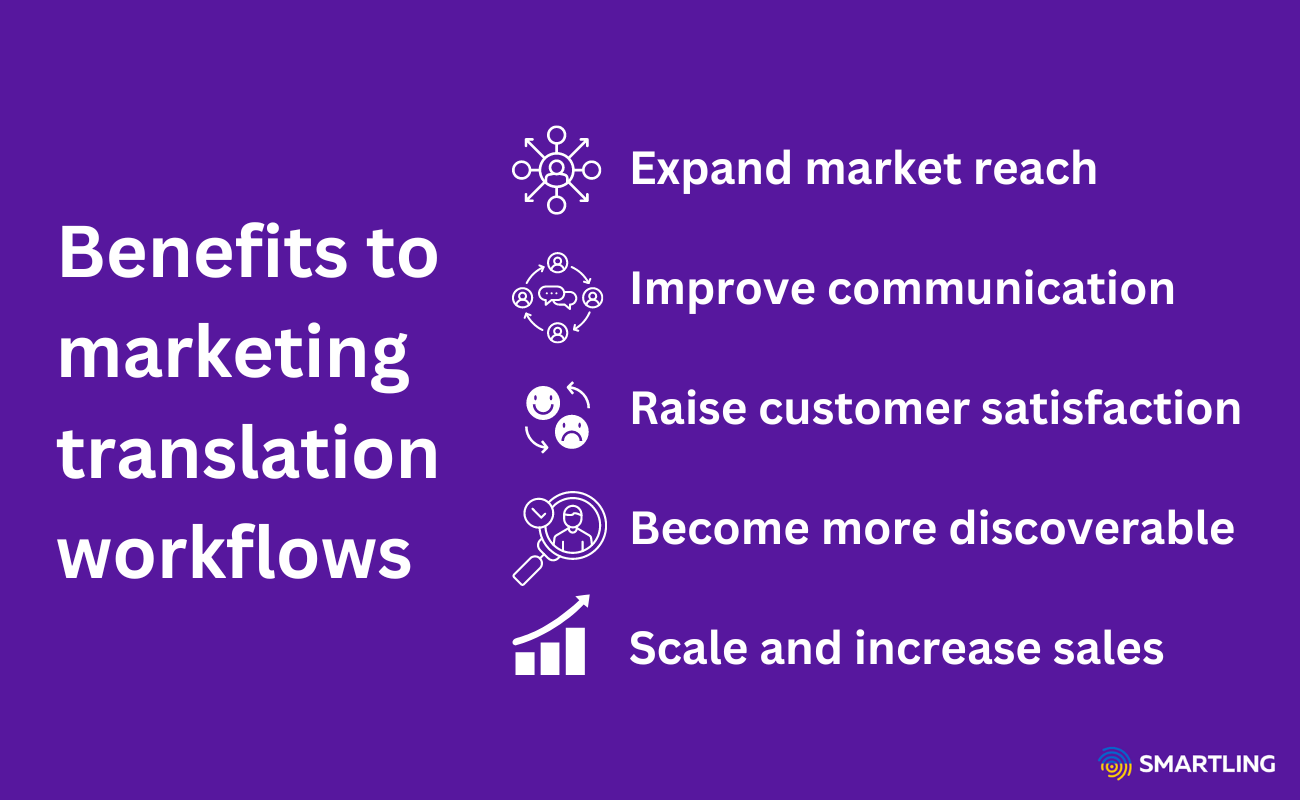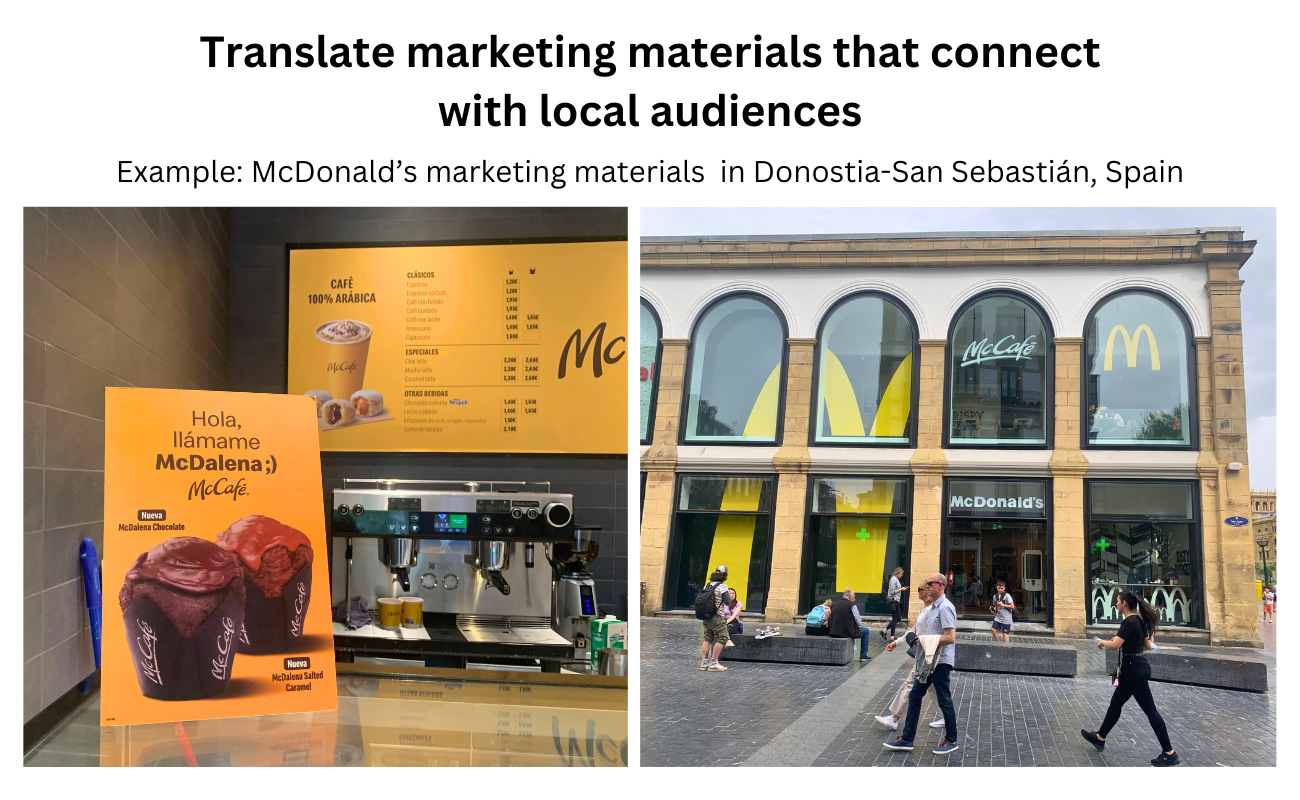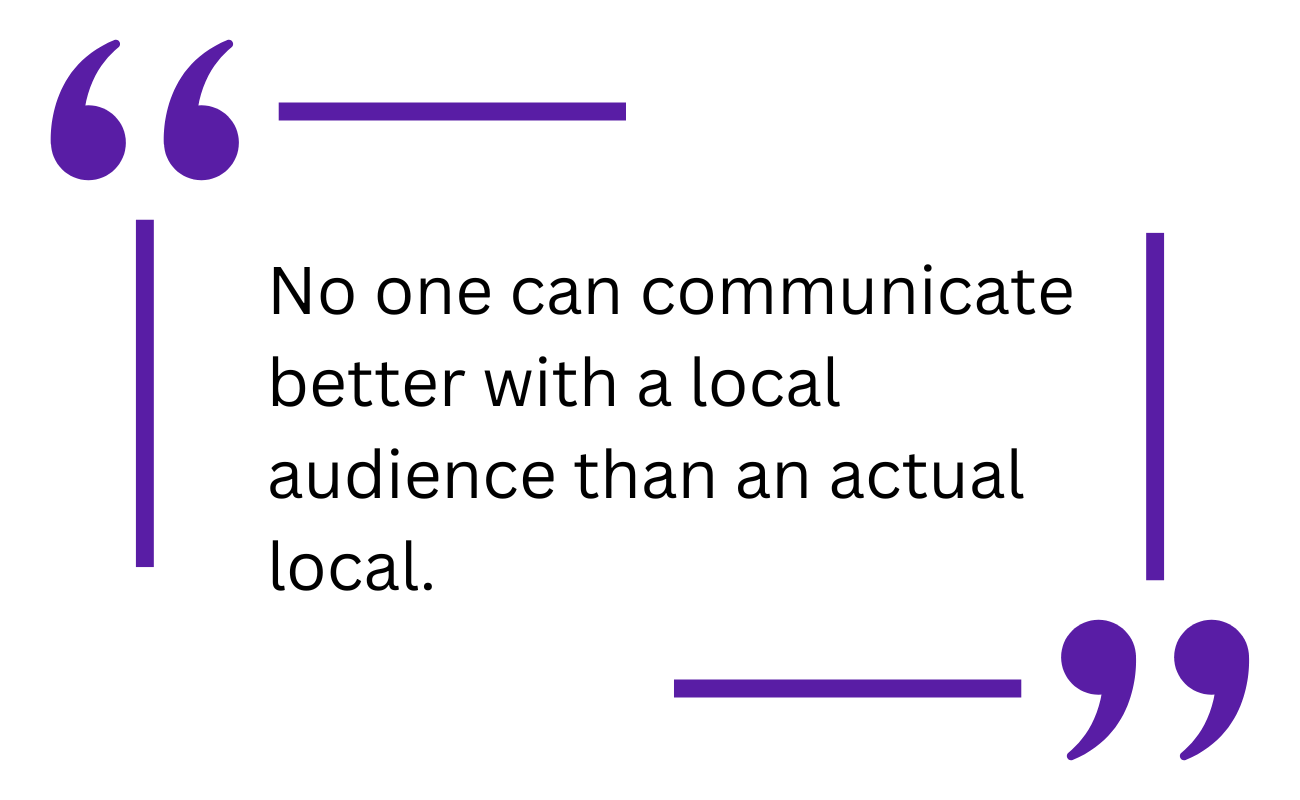Your company may want to scale to a new local market or better connect with your current multilingual audiences. How companies communicate with target audiences, especially through marketing, shapes how customers view their brands and how much companies can grow.
Like every part of business operations, the process matters. Marketing translation workflows should be efficient and consistent and should connect with audiences.
But that's easier said than done.
Accurate translations are almost impossible without the right strategy, workflow, and tools. Without these, you'll have to deal with thousands of hours of labor and high costs in addition to accuracy challenges.
Thankfully, companies can leverage innovative translation management solutions and AI-powered human translation services to create high-quality marketing translations that scale with company growth and connect with audiences in their native language.
Together, we'll explore how you can establish an efficient, consistent, and affordable marketing translation system for your global marketing efforts and reap the benefits of an improved localization strategy.
What is marketing translation, and what makes it effective?
Marketing translation is when a business translates marketing messages, like ads, marketing campaigns, blog content, and more, for a global audience. This process helps companies communicate and connect with audiences from different cultures in their native language. Companies that adopt a successful marketing translation approach can market to multilingual audiences, which increases their success rate and sales.  Marketing translation offers many benefits, such as opportunities to connect with audiences and grow your company.
Marketing translation offers many benefits, such as opportunities to connect with audiences and grow your company.
When businesses adopt effective translation strategies, they can anticipate several benefits:
- Expanded market reach: When companies translate and localize marketing materials, they can reach a wider audience. This promotes brand awareness, attracts more customers, and increases potential business growth.
- Improved communication: Businesses can more effectively connect with audiences when they have a familiar presence. If audiences understand your materials, there will be little room for confusion.
- Increased customer satisfaction: When companies learn how to tailor messages to each audience’s culture and language, they will build stronger customer relationships. High-quality translations make customers feel like they matter and show them that the brand communicates on their level.
- Greater discoverability: Translating marketing content opens the doors to becoming discoverable worldwide. Translated and localized content can improve a business’s search engine optimization and enable more customers to organically discover its brand.
- Scaled and increased sales: Ultimately, more accurate marketing translations lead to increased revenue, customer growth, and more opportunities to scale.
What makes traditional translation approaches inefficient?
Unfortunately, not all marketing translation projects are equal. Results can vary dramatically when it comes to the translation process and the final product.
Without an effective translation strategy, companies face considerable challenges:
- Limited resources: Not everyone has the team, software, and expertise to translate millions of words and thousands of documents the first time, let alone consistently continue the process for new materials.
- Collaboration obstacles: Without the right tools, collaboration between your marketing and translation teams is nearly impossible.
- High translation costs: Between expensive tools and costly human labor, consistent translation is a costly and daunting task with no end in sight.
- Delays and gaps: Marketing teams move fast. A demand for content in additional languages can cause inconsistencies and barriers before you launch in new markets. Teams often face delays as they try to update source materials and translated text in their day-to-day operations, feedback loops, and distribution systems.
- Brand voice: Companies typically face challenges with maintaining a consistent brand voice in their own native context, never mind in other languages. Maintaining the same voice across cultures and confirming that the intended meaning translates accurately is difficult. For example, a recently translated company tagline that meant to say “Established in 1982” instead said “Born in 1982”—which changed customers’ brand perception in the new market.
- Translation management: Teams frequently face obstacles when maintaining end-to-end translation workflows and ensuring high translation quality across all steps before releasing translated marketing materials to the public.
Types of marketing content to translate
As you prepare for a better marketing translation process, it's critical to consider the different types of marketing materials you’ll need to translate for your overall localization strategy.
While every type of business has marketing commonalities, B2B and B2C brands in particular may need to consider different marketing translation mediums and strategies.
Translation for B2B companies
B2B marketing translations often focus on education, insight, thought leadership, and practical industry takeaways. If companies want to maintain and grow their brand authority and credibility, they need to ensure that they can translate these materials accurately. Common B2B marketing materials include:
- Blog posts
- White papers
- Emails
- Sales data
- Case studies
Translated content should not only accurately communicate the source message but should also emotionally connect with the audience. Businesses can produce better results by emphasizing emotional pain points in the translated text that prospects throughout each marketing campaign and across all content types can identify with.
Translation for B2C companies
While B2C companies provide essential, valuable material to customers, they also entertain and encourage positive emotions through engaging marketing experiences. Their strategies primarily involve social media translation and interactive marketing touchpoints.
Naturally, these kinds of interactions often require different types of marketing mediums and platforms. Common B2C marketing materials include: Videos
- Social media posts
- Storefronts
- Short-form content
 This Spanish McDonald’s storefront in the Basque region translates its marketing materials for its local audience. B2C marketing content moves fast through daily publications and distribution. Storefronts see heavy foot traffic, and if customers don't understand a message, they’ll leave—often forever. Companies should translate marketing materials to keep up with the competition both online and at physical locations, especially when competing with customers’ attention spans.
This Spanish McDonald’s storefront in the Basque region translates its marketing materials for its local audience. B2C marketing content moves fast through daily publications and distribution. Storefronts see heavy foot traffic, and if customers don't understand a message, they’ll leave—often forever. Companies should translate marketing materials to keep up with the competition both online and at physical locations, especially when competing with customers’ attention spans.
Designing your marketing translation process
How exactly do you create and improve upon your marketing translation system?
It's essential to simplify the process. Many companies make mistakes by juggling different apps and working with inconsistent or unqualified local translators.
With that in mind, the best solution is to adopt an all-in-one translation management solution. A platform that also provides professional local translation services is even more beneficial since you can then use a single translation partner for your entire process. This approach guarantees consistent, high-quality translations and helps your company build an optimized workflow.
Optimizing your marketing translation workflow
Your translation workflow is essential for providing effective localized communication. Oleg Segal, CEO of DealA, a global online coupon company, provided Smartling with his experience in improving the process for a local culture:
“The effectiveness of translations directly impacts our customer connect[ions] and conversions. Investing in professional localization, not just literal translation, has taught us the importance of subtleties in language and culture. […]
“Translating marketing materials isn't always about being linguistically accurate—sometimes, it’s about being culturally correct. For example, idioms and phrases which make sense in one language may not have the equivalent meaning in another. […]
“A common pitfall [for us] was overlooking the cultural contexts initially. Once we translated an English catchphrase, it turned out to be offensive in a certain culture. […] To overcome this, we started involving native cultural consultants in the translation workflow, aiding us in preventing similar missteps in [the] future.”
By recognizing each target culture’s nuances and incorporating efficient translation and localization processes, Segal successfully produced more effective translations. ![How to create a better marketing translation workflow]
(//images.ctfassets.net/a8pkciehvm1g/1otfqtqEGfNiOlYzg3RCSZ/13c4d4b0ad385b7c5c4e1e72acf4e5b6/marketing_translation_workflow.png) *Follow these simple steps to improve your translation process.*
There are many more ways to enhance your localized marketing approach. As you develop your marketing translation plan, consider the following steps to get started:
1. Review your current marketing materials and strategy
How many pieces of marketing copy and content do you need to translate? Do you already have translated materials? And if so, do they meet the local audience’s standards? These questions are essential to understanding your present condition and getting started.
You can start the process by focusing on core marketing materials. By identifying the highest return on investment marketing activities, you can improve your output by prioritizing the most important tasks within each marketing translation project.
During this process, you can also build a vision and goals for improving your brand’s presence in each multilingual market.
2. Integrate a translation management solution
The proper translation management solution helps you speed up the process, increase accuracy, and lower marketing translation costs.
Translation management platforms make your localization strategy scalable. You don't have to limit your vision for marketing expansion. Instead, you can use translation technologies to manage translations, translate billions of words with neural machine translation tools, and communicate with local markets without barriers like low speed and high costs.
3. Partner with native-speaking expert marketing translators
 Local experts offer enriched expertise built on an understanding of cultural nuances and complexities.
Local experts offer enriched expertise built on an understanding of cultural nuances and complexities.
If you want to scale worldwide, you need to combine technology with human experts. At Smartling, we believe in the advantage of AI-powered human translators. You can get fast, affordable, and in-context translations by combining advanced AI technologies with local, native-speaking expert translators.
These expert translators rely on technology to translate foundational source text. By doing so, they can spend more of their time on complex cases and ensure that translated content authentically and accurately represents your brand. After all, no one can communicate better with a local audience than someone who knows them and speaks their language.
4. Measure and analyze results for consistent improvement
Translation management software and an expert localization and translation team can consistently monitor and perform quality assurance on your translation process. If you continually tweak and optimize translations for each target language, you can continue to grow and scale by better connecting with target audiences and local markets. Enhance your workflows with Smartling's solutions (Source) The best way to improve your global marketing translation strategy is to adopt an all-in-one solution like Smartling. Our platform provides hundreds of companies with the technology and translation services they need to translate marketing content and successfully reach multilingual markets worldwide.
With Smartling’s translation management system, you can grow your business faster by translating content for and communicating with more local markets. You can also assign content to translation workflows, notify users of new content, monitor translation progress and costs, and upload and optimize linguistic resources. It’s the perfect solution for a ready-to-go translation system.
Additionally, marketing teams can take full advantage of Smartling’s professional translation services. Smartling provides native-speaking expert translators who partner with the latest AI technologies. With these AI-powered, high-quality human translations, brands can serve their markets with confidence, knowing that they are communicating using the best possible translations.
Smartling also includes state-of-the-art machine translation technology so you can translate billions of words in seconds at the highest possible quality. Using these, as well as Smartling’s other critical technologies and localization services, you can confidently reach your target markets.
Smartling has the tools and services to win over your target audience and make the sale. Watch this five-minute demo to see how you can leverage Smartling’s AI-powered translators, translation management system, and localization services to craft high-performing marketing translations.
%20052925%20-%20AI%20Translation%20101%20(1).png)
.jpg)